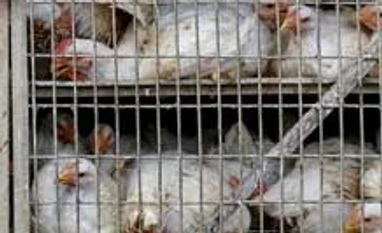Chicken prices soared to a record high after a heat wave killed about 17 million birds in May, as temperatures regularly above 40 degrees Celsius led to mounting casualties among livestock.
May and June are typically the hottest months in the country but temperatures this year have been above normal in some regions, partly due to emergence of an El Niño weather pattern, which in 2009 brought the worst drought in four decades to the country.
The millions of dead birds will be a major blow both for the growing poultry sector in the world’s second-most populous country and for local maze producers, who were hoping rising feed consumption would soak up their supplies.
“In the past two-three weeks poultry feed demand has fallen nearly 30 per cent,” said K V Krishna Charan, general manager at feed producer Komaral Feeds and Foods.
Usually, the bird mortality rate remains at two-three per cent during summer but it rose to 10 per cent last month amid the scorching heat, said Prasanna Pedgaonkar, deputy general manager at chicken processor Venky’s.
With 17 million broiler chickens dying in May, the highest ever deaths per month wholesale chicken prices in western India jumped to a record Rs 95 ($1.49) per kg, up 35 per cent over a month. A ban imposed by Maharashtra on beef also contributed to the rise in prices.
Chicken is set to become more costly as mercury levels continue to rise in June, industry sources said.
Broiler chickens cannot survive if the temperature stays above 45 Celsius for long, said Vasant Kumar, president of the Poultry Breeders Welfare Association of Maharashtra.
Maximum temperature in the southern states Andhra Pradesh and Telangana, which account for a third of India’s poultry output, rose above 47 degrees Celsius last week, 3 to 7 degrees above normal, killing more than 2,100 people.
India was expecting monsoons to bring some relief, but the arrival of the June-September rains over the southern coast of Kerala has been delayed. The rains are now expected to reach by June 4, instead of May 30, a weather department official said.
"Temperatures need to go down. Further extension of the heat wave by a week can kill a few more million birds," said Pedgaonkar from Venky’s.
May and June are typically the hottest months in the country but temperatures this year have been above normal in some regions, partly due to emergence of an El Niño weather pattern, which in 2009 brought the worst drought in four decades to the country.
The millions of dead birds will be a major blow both for the growing poultry sector in the world’s second-most populous country and for local maze producers, who were hoping rising feed consumption would soak up their supplies.
“In the past two-three weeks poultry feed demand has fallen nearly 30 per cent,” said K V Krishna Charan, general manager at feed producer Komaral Feeds and Foods.
Usually, the bird mortality rate remains at two-three per cent during summer but it rose to 10 per cent last month amid the scorching heat, said Prasanna Pedgaonkar, deputy general manager at chicken processor Venky’s.
With 17 million broiler chickens dying in May, the highest ever deaths per month wholesale chicken prices in western India jumped to a record Rs 95 ($1.49) per kg, up 35 per cent over a month. A ban imposed by Maharashtra on beef also contributed to the rise in prices.
Chicken is set to become more costly as mercury levels continue to rise in June, industry sources said.
Broiler chickens cannot survive if the temperature stays above 45 Celsius for long, said Vasant Kumar, president of the Poultry Breeders Welfare Association of Maharashtra.
Maximum temperature in the southern states Andhra Pradesh and Telangana, which account for a third of India’s poultry output, rose above 47 degrees Celsius last week, 3 to 7 degrees above normal, killing more than 2,100 people.
India was expecting monsoons to bring some relief, but the arrival of the June-September rains over the southern coast of Kerala has been delayed. The rains are now expected to reach by June 4, instead of May 30, a weather department official said.
"Temperatures need to go down. Further extension of the heat wave by a week can kill a few more million birds," said Pedgaonkar from Venky’s.
($1 = 63.7300 rupees)
)